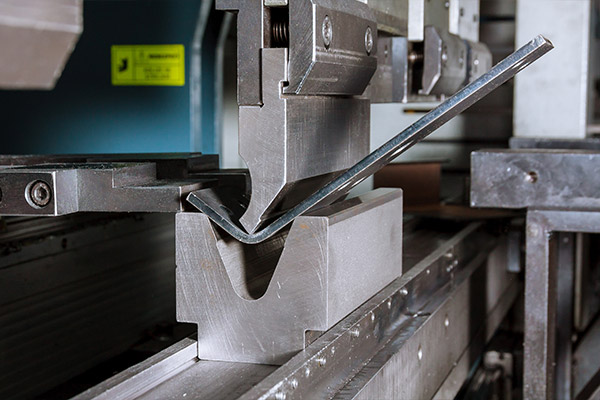Welcome to My Blog! 🌟
Before we dive into the content, I’d love for you to join me on my social media platforms. It’s where I share more insights, engage with our vibrant community, and post regular updates. Here’s how you can stay connected:
📘 Facebook: Connect with me on Facebook
Now, let’s embark on this journey together. I hope you find the content here insightful, engaging, and most importantly, valuable. Let’s explore, learn, and grow together! 🚀
Table of Contents
Introduction

In the world of knives, whether for culinary arts, outdoor survival, or industrial applications, one factor remains crucial—steel. But with so much information (and misinformation) circulating, many buyers, users, and even experienced knife makers fall prey to myths surrounding knife tool steel.
From exaggerated claims about “indestructible” edges to confusion over steel composition, these myths can lead to poor purchasing decisions, performance failures, or costly maintenance. Understanding the reality behind these common misconceptions is vital for anyone who relies on blades for daily use or business.
This guide tackles the top 6 myths about knife tool steel, helping you separate fact from fiction. Whether you’re choosing your first knife or refining your forging knowledge, learning what knife tool steel really offers—and what it doesn’t—is your path to smarter decisions.
Myth 1: All Knife Tool Steel Is Created Equal
One of the most common misconceptions among consumers and even some seasoned knife enthusiasts is the idea that all steels used for blades behave the same. This assumption can lead to serious misunderstandings when choosing the right tool for a specific task.
In reality, steels used in knife production cover a wide spectrum of chemical compositions and mechanical properties. Each alloy is engineered for particular strengths, whether it’s superior edge retention, corrosion resistance, or toughness under stress. For instance, steels rich in carbon typically excel at holding a sharp edge but are more vulnerable to rust. Meanwhile, those enhanced with chromium are better suited to humid or wet environments due to their resistance to oxidation.
Let’s take a quick look at the general categories often confused as being interchangeable:
- High-carbon steels: Known for excellent sharpness and cutting strength, but must be maintained frequently to avoid rust.
- Stainless varieties: Easier to maintain and resistant to corrosion, though they might not offer the same edge-holding ability.
- Specialty tool grades (such as D2, A2, or O1): Formulated for industrial or rugged use, offering a balance between durability and wear resistance.
So, when two blades are labeled as being made from “tool steel,” it’s not a guarantee they will perform identically. Everything from the heat treatment to the alloy’s exact formulation can make a significant difference in real-world use. The key takeaway here is that performance is highly dependent on the specific chemistry and intended application of the metal, not just the category it falls under.
Myth 2: Higher Hardness Means Better Knife Tool Steel

A widespread belief among buyers is that a higher hardness rating automatically translates to a superior blade. This idea is primarily based on the logic that harder materials maintain a sharper edge for longer. While that’s partly true, the full picture is more complex.
Hardness, typically measured on the Rockwell Hardness Scale (HRC), does indeed correlate with edge retention. However, increased rigidity often comes at the cost of brittleness. A blade that’s too hard can chip or crack when exposed to lateral forces, impacts, or twisting—especially if used improperly. Meanwhile, a slightly softer yet tougher steel may bend under pressure instead of breaking, which is often more desirable in high-impact scenarios.
To illustrate the balance of attributes, consider the following comparison:
| Steel Type | Average HRC | Edge Retention | Toughness | Corrosion Resistance |
|---|---|---|---|---|
| D2 Tool Steel | 60-62 | High | Medium | Medium |
| A2 Tool Steel | 58-60 | Medium | High | Low |
| 440C Stainless | 58-59 | Medium | Low | High |
| O1 Tool Steel | 58-60 | High | Medium | Low |
As the table shows, different alloys trade one advantage for another. Therefore, choosing the hardest blade material isn’t always the best route. Consider the context in which the blade will be used—precision slicing, batoning wood, skinning game, or kitchen prep all call for different properties. In essence, there’s no one-size-fits-all, and chasing the highest HRC rating can sometimes do more harm than good.
Myth 3: Stainless Knife Tool Steel Doesn’t Rust
It’s easy to assume that any stainless metal will never corrode, but this is a dangerously misleading belief. The term “stainless” actually refers to a higher resistance to rust, not complete immunity. Many users find this out the hard way after neglecting maintenance and seeing unexpected spots or discoloration appear on their blades.
Stainless alloys typically contain at least 10.5% chromium, which forms a passive layer on the surface to protect against moisture and oxidizing agents. While this feature does enhance durability in wet conditions, it doesn’t make the blade completely rustproof. Factors like salinity (from sea air or sweat), acidic foods, and improper storage can still lead to corrosion over time.
Some commonly used stainless materials include 440C, AUS-8, and VG-10. These metals offer a strong blend of edge retention and corrosion resistance but still require responsible care. Best practices for preventing rust include:
- Thoroughly drying the blade after cleaning or exposure to moisture
- Storing knives in a well-ventilated area
- Applying a light oil or protective coating, especially if the blade will be stored for long periods
- Cleaning promptly after contact with acidic or salty substances
Ultimately, while stainless options are great for reducing upkeep, they still demand a level of attention. Proper care ensures these materials maintain their visual appeal and cutting performance over the long term.
Myth 4: The More Expensive the Knife Tool Steel, the Better

Price is often equated with quality, but when it comes to blade materials, that’s not always a reliable indicator. Some high-cost steels are designed for very specific applications and may not perform better in general use than more affordable counterparts.
Premium materials—especially those made using powder metallurgy techniques—can command higher prices due to their uniform grain structure and wear resistance. Steels like CPM S35VN, Elmax, and ZDP-189 are often marketed as top-tier, and while they do offer impressive performance, they may not be the most practical choice for everyone.
In many cases, factors influencing the cost include:
- Rare alloying elements like vanadium or molybdenum
- Advanced or proprietary production processes
- Limited availability due to small-batch production
- Branding and perceived prestige
Meanwhile, more affordable materials such as 1095 carbon steel, 5160 spring steel, or 12C27 stainless can provide excellent service life when matched with the right task. These metals might lack some high-end features, but they often offer easier sharpening and greater flexibility under heavy use.
Instead of relying solely on price as a benchmark, evaluate what the material offers in terms of real-world use. Is it easy to sharpen in the field? Does it hold up to moisture and frequent cutting tasks? Consider your use case, skill level, and maintenance habits when choosing—not just the marketing label or price tag.ad of relying on price alone.
Myth 5: Knife Tool Steel Never Needs Sharpening
Some advertising claims promote blades that “never need sharpening,” suggesting that certain knife tool steel compositions are maintenance-free. Unfortunately, this is misleading.
All steel dulls over time. The rate of dulling may vary based on usage, edge geometry, and hardness, but no blade is immune. In fact, harder steels may resist wear longer but are more difficult to sharpen, especially without specialized tools.
Routine sharpening and honing are essential to maintain:
- Cutting efficiency
- Safety in handling
- Extended blade lifespan
Understanding that even the best knife tool steel requires regular sharpening is essential for realistic expectations and proper tool maintenance.
Myth 6: Knife Tool Steel Types Don’t Affect Cutting Purpose

Some users believe that the type of steel doesn’t significantly impact the effectiveness of a knife for a particular task. In reality, using the wrong knife tool steel can lead to breakage, rust, or poor edge retention.
Different applications call for specific steel properties:
- Outdoor survival knives require high toughness and ease of field sharpening—1095 or O1 steels are popular.
- Kitchen knives need high corrosion resistance and thin, sharp edges—VG-10 or 440C stainless steels are better suited.
- Industrial utility knives benefit from steels like D2 or M4, which offer wear resistance under tough use.
When choosing a knife, always consider how the properties of the knife tool steel align with your intended use.
Conclusion
Knife tool steel is a complex and fascinating subject. Believing in myths like “harder is always better” or “stainless steel never rusts” can lead to misuse, faster wear, or unnecessary costs. By understanding the real properties of different knife tool steel types, you empower yourself to make more effective choices for purchase, usage, and maintenance.
Each application—be it culinary, tactical, or industrial—has different steel requirements. Whether you’re a professional bladesmith or a first-time buyer, asking the right questions about knife tool steel gives you an edge in performance, durability, and satisfaction.
FAQ
Q1: What is knife tool steel?
Knife tool steel refers to a variety of high-performance steels used in knife manufacturing. These steels are engineered for edge retention, hardness, toughness, and corrosion resistance, depending on their chemical makeup and intended use.
Q2: Is D2 a good knife tool steel?
Yes, D2 is a popular tool steel for knives because it offers excellent edge retention and moderate corrosion resistance. It is often used in heavy-duty or semi-stainless applications.
Q3: What’s the difference between carbon and stainless knife tool steel?
Carbon steel generally has higher edge retention and ease of sharpening but is more prone to rust. Stainless knife tool steel has added chromium to resist corrosion, though it may sacrifice some sharpness retention.
Q4: Can I sharpen knife tool steel at home?
Yes, many knife tool steel types can be sharpened at home using whetstones, ceramic rods, or guided sharpening systems. Harder steels may require diamond abrasives for efficient sharpening.
Q5: Which knife tool steel is best for kitchen knives?
Stainless knife tool steel types like VG-10, AUS-10, and 440C are ideal for kitchen knives because they resist corrosion and maintain a fine edge suitable for food preparation.

